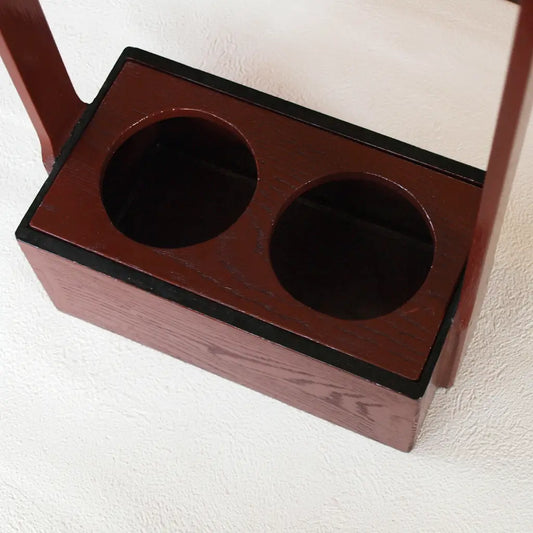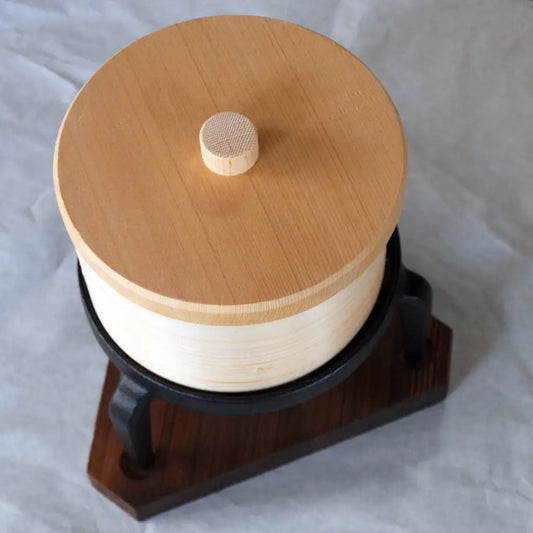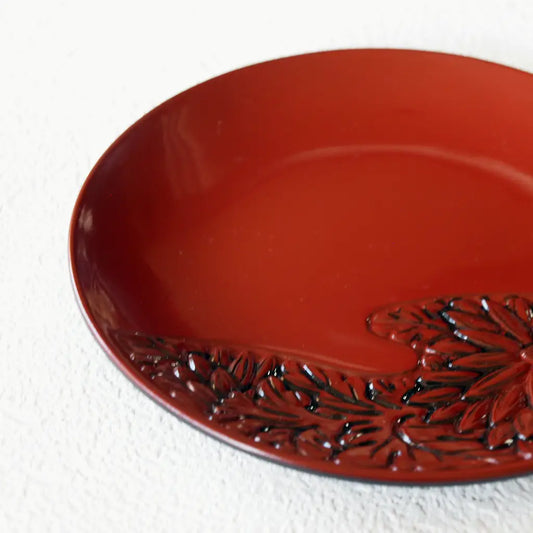Lacquerware production process
The pride of the craftsman is in each and every piece
The process of lacquerware production is very delicate and complicated. Below is a simple general process of lacquerware production, but the steps and techniques may vary depending on the maker and region.

1. Preparation of the substrate
The substrate for making lacquerware is prepared. This can be wood, various synthetic resins (plastic materials), wood powder, bamboo, metal, or even cloth and paper. Preparation is done according to the shape and design of the substrate.
2. Preparing the base <br>The base material is polished and the surface is smoothed. By polishing and applying a primer, the surface is made easier for the lacquer to adhere to.
3. Undercoating <br> In lacquerware production, after preparing the base, the undercoat is applied. The undercoat helps the lacquer adhere to the base material and protects it, and raw lacquer is usually used.
4. Lacquering <br>Next, lacquer is applied evenly. Here, multiple layers of lacquer are applied, waiting for each layer to dry before applying the next layer, and the process is repeated. Depending on the lacquering technique and coloring, a variety of patterns and designs can be created.
5. Carving and Decoration <br>Lacquerware may have distinctive patterns or carvings. After the lacquer has dried, the pieces are carved and decorated using fine brushes and tools.
6. Polishing <br>Once the lacquer has completely dried, the piece is finely polished. Polishing gives the surface of the lacquerware a smooth finish and a glossy finish.
7. Finishing The final step is to give the lacquerware a final finishing touch. This can involve polishing , applying more lacquer, or applying patterns to the surface using specific techniques.
8. Drying and Hardening Once the lacquerware is complete, it is left to dry and harden completely. This process may take some time, but it is important to wait until the lacquer is sufficiently hardened.
The production of lacquerware is a time-consuming and labor-intensive process that requires the skills of a skilled craftsman. Lacquer has highly advanced chemical properties, and its handling requires specialized knowledge and careful handling.
How to choose lacquerware | Key points : characteristics of lacquerware and how to care for it

Featured collection
Large sale of stock
A harmony of beauty and history. Feel the breath of Japanese tradition in lacquerware from the storehouse.
Rare storehouse lacquerware will bring a touch of good old Japan to your space. We sell a wide range of products, from fascinating vessels and moisturizing lacquerware to easy-to-use and easy-to-handle synthetic resin products for commercial use. Products are taken out from the front of the storehouse, where you cannot go further inside, so you can look forward to what you find. Why not use them at home? It would be nice to have them❣ Enjoy looking for your favorite products.
-
Yudofu set/For one person/For disaster prevention/Camp/Cypress/With sawara lid/Stainless steel interior/Trivet/Dish/Base
Regular price ¥1,000 JPYRegular priceUnit price per -
Individual plates, wild chrysanthemum carvings, azuki beans on the inside, black on the outside, 4.5 inches, Showa retro
Regular price ¥200 JPYRegular priceUnit price per -
[Stylish] Wooden beer carrier, vermilion, with handle, Showa retro, can also be used as a flower vase
Regular price ¥3,800 JPYRegular priceUnit price per -

[Stylish] Wooden, beer carrier 2, with handle, Showa retro, can also be used as a flower vase
Regular price ¥3,000 JPYRegular priceUnit price per





